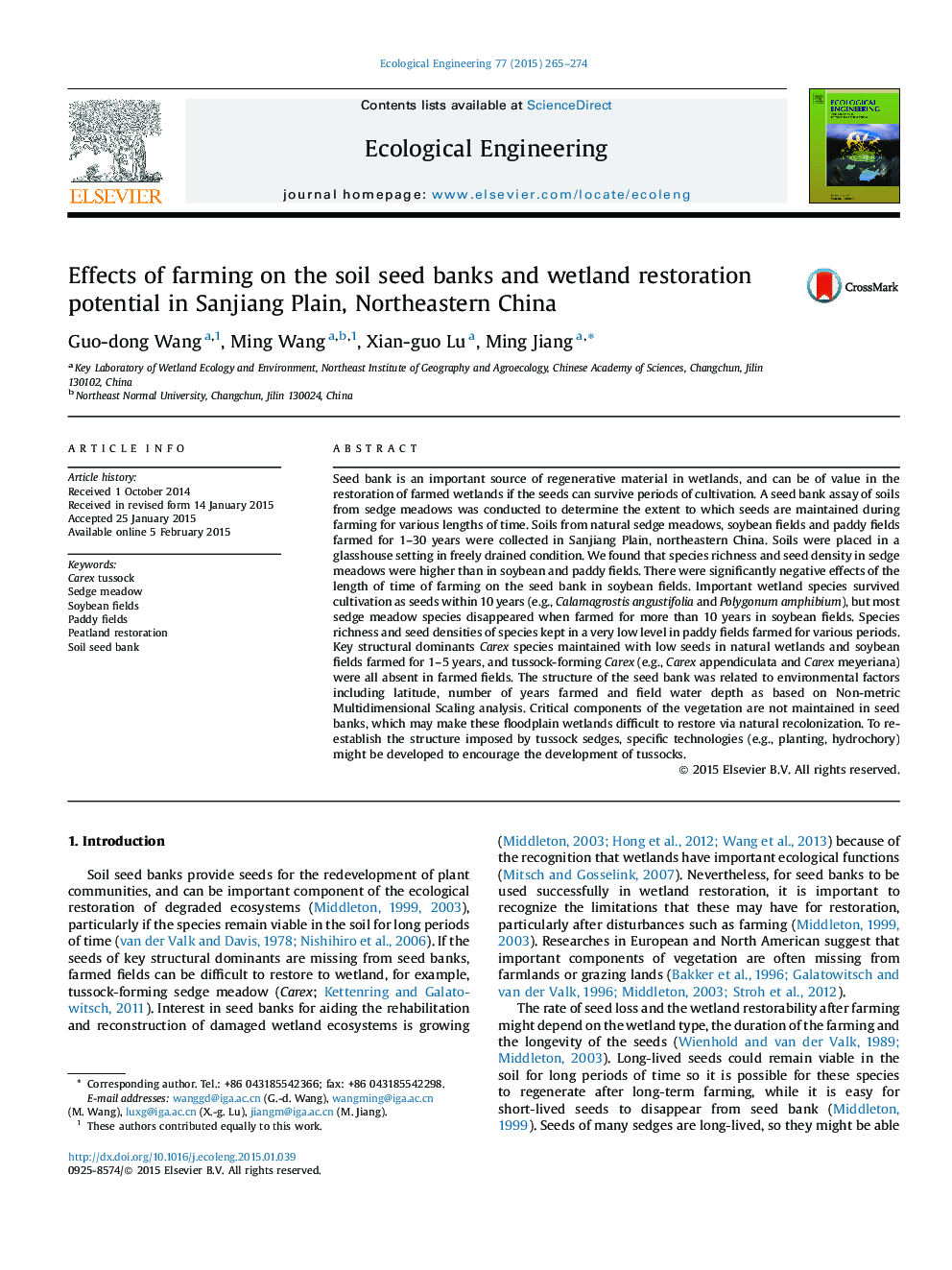| کد مقاله | کد نشریه | سال انتشار | مقاله انگلیسی | نسخه تمام متن |
|---|---|---|---|---|
| 4389273 | 1618022 | 2015 | 10 صفحه PDF | دانلود رایگان |

Seed bank is an important source of regenerative material in wetlands, and can be of value in the restoration of farmed wetlands if the seeds can survive periods of cultivation. A seed bank assay of soils from sedge meadows was conducted to determine the extent to which seeds are maintained during farming for various lengths of time. Soils from natural sedge meadows, soybean fields and paddy fields farmed for 1–30 years were collected in Sanjiang Plain, northeastern China. Soils were placed in a glasshouse setting in freely drained condition. We found that species richness and seed density in sedge meadows were higher than in soybean and paddy fields. There were significantly negative effects of the length of time of farming on the seed bank in soybean fields. Important wetland species survived cultivation as seeds within 10 years (e.g., Calamagrostis angustifolia and Polygonum amphibium), but most sedge meadow species disappeared when farmed for more than 10 years in soybean fields. Species richness and seed densities of species kept in a very low level in paddy fields farmed for various periods. Key structural dominants Carex species maintained with low seeds in natural wetlands and soybean fields farmed for 1–5 years, and tussock-forming Carex (e.g., Carex appendiculata and Carex meyeriana) were all absent in farmed fields. The structure of the seed bank was related to environmental factors including latitude, number of years farmed and field water depth as based on Non-metric Multidimensional Scaling analysis. Critical components of the vegetation are not maintained in seed banks, which may make these floodplain wetlands difficult to restore via natural recolonization. To re-establish the structure imposed by tussock sedges, specific technologies (e.g., planting, hydrochory) might be developed to encourage the development of tussocks.
Journal: Ecological Engineering - Volume 77, April 2015, Pages 265–274